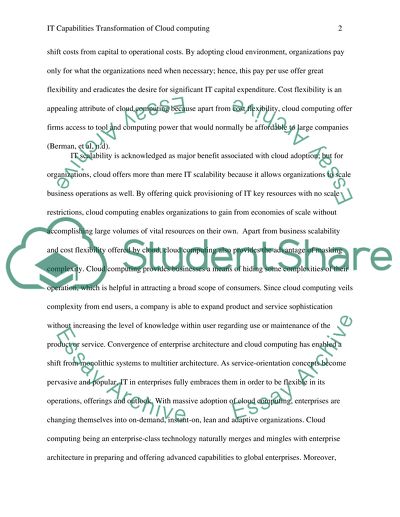Cite this document
(“IT capabilities transformation of cloud computing Essay”, n.d.)
IT capabilities transformation of cloud computing Essay. Retrieved from https://studentshare.org/information-technology/1487574-it-capabilities-transformation-of-cloud-computing
IT capabilities transformation of cloud computing Essay. Retrieved from https://studentshare.org/information-technology/1487574-it-capabilities-transformation-of-cloud-computing
(IT Capabilities Transformation of Cloud Computing Essay)
IT Capabilities Transformation of Cloud Computing Essay. https://studentshare.org/information-technology/1487574-it-capabilities-transformation-of-cloud-computing.
IT Capabilities Transformation of Cloud Computing Essay. https://studentshare.org/information-technology/1487574-it-capabilities-transformation-of-cloud-computing.
“IT Capabilities Transformation of Cloud Computing Essay”, n.d. https://studentshare.org/information-technology/1487574-it-capabilities-transformation-of-cloud-computing.


